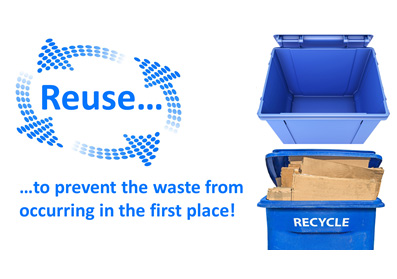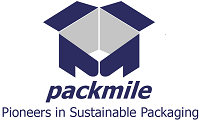For transport packaging, impact on waste starts with reduction and reuse, not recycling. The highest priority should be preventing waste and conserving resources, not managing waste and renewing resources. Hierarchy charts, “3R” slogans and circular economy principles will all verify that the reuse of packaging is the preferred approach over the recycling of packaging for eliminating solid waste.
Corporate operation and sustainability objectives in moving goods through the supply chain should strive to achieve greater impact by prioritizing source reduction initiatives like reuse. Reusable packaging products like pallets, bins, containers, totes and trays are built for continuous purpose, and systems to manage inventories and return products for reuse are being developed and optimized every day. There is much expertise available today in the planning, modelling and management of reusable packaging systems. And rapid growth in companies specializing in logistics services, automation equipment, and new technologies for tracking and real-time data collection is making reuse possible for more applications and delivering greater business benefits in addition to waste prevention.

There is a lot of attention in increasing recyclability and recycling rates of packaging materials, rightfully so. U.S. recycling rates of all municipal solid waste have largely been stagnant around 34% for the past decade, with “containers and packaging” comprising of about 30% of all solid waste, according to EPA statistics. In California, for example, recycling rates have declined over the past few years dropping to 44% in 2016, with packaging making up 26% of the state’s disposal stream, per CalRecycle figures. Challenges in recycling are compounding due to declining export markets for recycled scrap material, rising concerns over impurities within recycled content, and ongoing confusion over proper recycling practices.
Despite these obstacles, recycling should be encouraged when reduction and reuse options are not available. Recycling also plays an important role at the end of useful life for reusable packaging, when other product life-extending methods like repair, part replacement and remanufacture are no longer possible.
The sustainability bar needs to be raised for even highly-recycled single-use materials. We can and should do better than transport packaging that is used one time before energies are expended to recover and recycle the material back into its constituent form, only to manufacture the same product again. That action does not reduce waste; it only reduces the impact of waste. When successful, recycling of single-use packaging makes a linear or “take, make, waste” model of production more efficient by recovering ingredients from waste and contributing to the take and make once more.
Instead, aim for a circular solution and prevent the waste from occurring in the first place by designing and implementing a reusable packaging system to maximize product performance, utility and value. The more packaging is reused, the less waste is generated requiring recycling, and a greater impact on waste reduction goals can be realized.
Tim Debus
President & CEO
Reusable Packaging Association


Leave A Comment